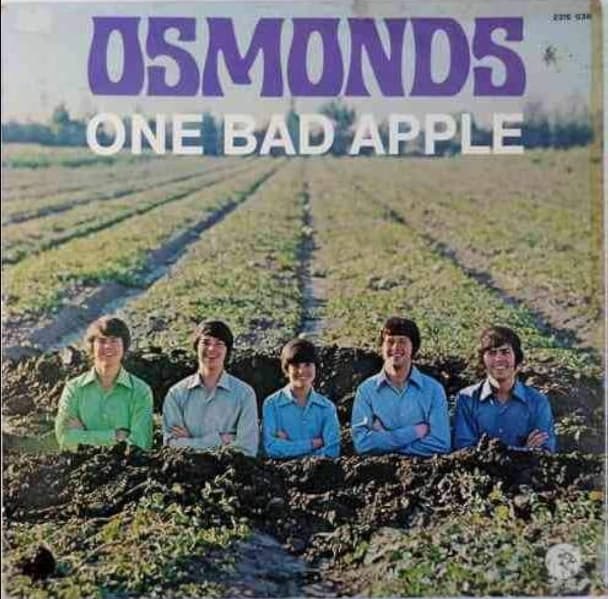
A Sweet Start That Soured the Soul: The Innocence Lost in a Single Bite
Ah, The Osmonds. For many of us who remember those vibrant days of the early 70s, their name evokes a whirlwind of clean-cut charm, infectious harmonies, and a wholesome energy that felt almost otherworldly. They were a phenomenon, a family act that blossomed from variety shows into full-fledged pop idols, and at the forefront of their meteoric rise was a song that, for a brief, shining moment, seemed to perfectly encapsulate their fresh-faced appeal: “One Bad Apple”.
Released in late 1970, this track wasn’t just a hit; it was a juggernaut. It roared onto the charts, quickly ascending to the coveted number one spot on the Billboard Hot 100, where it held court for a triumphant five weeks in February and March of 1971. For a group of fresh-faced siblings from Utah, it was an unprecedented triumph, solidifying their place as the new darlings of American pop music. It sold over a million copies, earning them a gold record and setting the stage for what would be a remarkable, albeit sometimes tumultuous, career.
But beyond the impressive chart statistics and commercial success lies a story that, for those of us who grew up with the song, carries a deeper resonance. “One Bad Apple” isn’t just a catchy tune; it’s a fable set to music, a simple yet profound exploration of the vulnerability that comes with first love and the bitter sting of betrayal. The lyrics paint a vivid picture of a young heart captivated by someone seemingly perfect, only to discover that beneath the dazzling exterior lies a core of deceit. “One bad apple don’t spoil the whole bunch, girl,” the song assures, yet the ache in Donny Osmond’s youthful voice suggested otherwise. It spoke to the universal experience of shattered illusions, the painful realization that even the most alluring promise can turn to dust.
The narrative of “One Bad Apple” is deceptively simple: a protagonist, utterly smitten, pours their heart out, only to be left heartbroken. The “bad apple” in question is not just a person; it’s a metaphor for the disillusionment that inevitably accompanies growing up. For a generation teetering on the edge of adolescence, this song was a poignant soundtrack to their own burgeoning understanding of the complexities of relationships. It was a gentle warning, wrapped in a joyous pop melody, that not everyone is as they seem, and that even the sweetest intentions can lead to the deepest cuts.
Looking back, the song’s meaning extends beyond a simple cautionary tale. It also reflects the cultural landscape of the time. The Osmonds, with their clean-cut image and family values, were a stark contrast to the burgeoning counterculture movement. “One Bad Apple” fit perfectly into that wholesome narrative, appealing to parents and children alike with its relatable theme of youthful heartbreak without veering into anything too controversial. It was safe, it was catchy, and it resonated with a widespread audience who yearned for a return to simpler times, even as the world around them became increasingly complex.
For many of us, hearing “One Bad Apple” today is more than just revisiting a catchy pop tune. It’s a bittersweet journey back to a time when life seemed a little less complicated, a time when our own hearts were perhaps a little more innocent, and a little more susceptible to that first “bad apple.” It reminds us of those first tentative steps into the world of romance, the thrill of new affections, and the inevitable lessons learned from heartbreak. It’s a testament to the enduring power of a song to not just entertain, but to evoke memories, to stir emotions, and to connect us to a past that, for all its simplicity, shaped who we are today. The song, much like a faded photograph, captures a moment in time, a feeling, a memory of a sweet beginning that, for some, ended with a sour taste. But even that bitterness holds a certain nostalgic charm, a reminder of how far we’ve come since those days of youthful vulnerability and the lessons learned from just “One Bad Apple.”